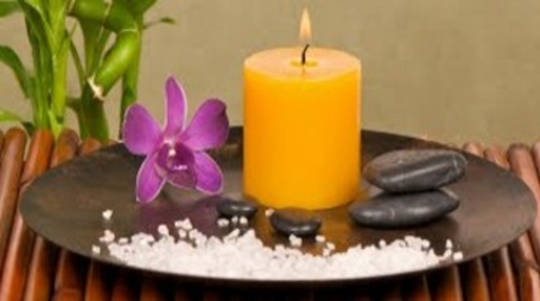
Feng Shui, a Chinese term meaning “Wind and Water”, predates Confucianism and Taoism, and has been practiced for over three thousand years in China. Early practitioners of Feng Shui located building sites for homes and villages. An auspicious site was one where the vital energy called Ch’i flowed in a manner that was harmonious and supportive of human life.
Feng Shui practitioners relied on their highly tuned senses, their intuition, and the knowledge passed down from their teachers to assess the land. They were interpreters of sorts, translating the dialect of a mountain, valley, or meadow into the language that local villagers could understand and benefit from. In this way they were responsible for strategically placing habitats above flood plains, below strong winds, and in the safe embrace of land that was blessed with harmonious Ch’i.
Often called the “belly of the dragon”, a classically harmonious configuration of land was much like the shape of an armchair. The preferred plot for building sat on even ground, and was embraced and protected in back and around both sides by mountains, hills, or a forest, similar to the back and armrests of a chair. The land then descended to a lower level in front of the plot, where a river, stream, pond, or lake completed the ideal location.
Feng Shui practitioners paid close attention to the intuitive impressions that they received as they “joined” with the land and felt its Ch’i qualities. They listened to every sound, tasted the soil, scouted the surrounding area, observed the contours of the land, looked for the telltale patterns made by wind and water, and watched for omens. Every physical feature and condition communicated the quality of the surrounding Ch’i. Animal bones, dead trees, and sharp protruding or waterworn rocks were often considered bad omens, while vibrant foliage, meandering streams, and living game animals symbolized good fortune, health, and happiness for the people who would live there.
Once a suitable plot of land was located, the Feng Shui practitioner guided the building process so that the benevolent qualities of the Ch’i were not damaged in any way. They chose the building materials and monitored every step of construction to assure that the Ch’i continued to flow in a friendly, nourishing manner. The building was like a jewel being placed in its perfect setting. One wrong move could harm or destroy the delicate Ch’i balance between the manmade structure and its natural surroundings.
Western Feng Shui
To practice Feng Shui today, we need to blend traditional Feng Shui wisdom with our own keen intuitive, investigative, diagnostic, and communicative skills. Our Western habitats present us with a very different scenario than that of the original Feng Shui practitioners. Many structures are located on land that the ancient practitioners would never have chosen, and often the structure’s shape and detailing break every classic Feng Shui rule.
Instead of finding the perfect plot of land to develop gently, we usually start with a structure that already exists. If the builders were not careful, they disturbed the natural Ch’i that circulated around the property. We find that in most cases, we are unable to control the location, the direction, or the configuration of other buildings and streets in the area. This presents the Western Feng Shui practitioner with a new set of challenges. We are rarely dealt a perfect hand.
However, when we apply Feng Shui principles, we find that we have quite a deck of powerful, results-producing ways to enhance the Ch’i and establish harmony in our environments. Whether the direction is north, south, east, or west, whether the location is inner city or rural mountaintop, whether the intent is business success or residential harmony, the healthy flow of Ch’i is always crucial. Just like human beings, no two buildings are alike in form or function. The challenge and the joy in Feng Shui is to balance the meridians or pathways of Ch’i in our individual homes and offices to achieve the desired result — health, prosperity, and happiness.
You can be your own Feng Shui practitioner. The art and science of Feng Shui gives you a big bag of tools to help you produce positive results in your environments. Practice working with them, and instead of wondering what you can do to improve your surroundings, you will see with your Feng Shui eyes exactly what to do. You will know pre- cisely where to “tap.”
Feng Shui, Here and Now
 Experience has taught me to apply Feng Shui principles wherever I am. This means that a rental apartment, leased office, hotel room, or any "temporary” quarters still needs to be balanced. I find it tremendously helpful to enhance the Ch’i in even the most temporary accommodations, such as in the places where I hold workshops or spend a few nights when traveling.
Experience has taught me to apply Feng Shui principles wherever I am. This means that a rental apartment, leased office, hotel room, or any "temporary” quarters still needs to be balanced. I find it tremendously helpful to enhance the Ch’i in even the most temporary accommodations, such as in the places where I hold workshops or spend a few nights when traveling.
Many people look forward to applying Feng Shui to their new homes — as soon as they buy them. But, they feel it’s a waste of time and money to fix up rentals they’ll be in for just a year or two. This is like saying, “I’m going to wait a year or two to take good care of myself.” Lodging or office space that has Ch’i-depleting qualities can drain the resources of those who live or work there, whether temporary or not. On the other hand, a Ch’i-enhanced environment attracts all kinds of benefits and positive opportunities.
If your goal is to buy a house, or simply to live a good life, it is wise to do everything in your power to create a personal paradise, right here, right now. The Ch’i that moves through the spaces where you live and work NOW is of vital importance to your health, prosperity, and happiness. So, begin where you are. Balancing and enhancing the environment where you find yourself today is one of the best ways to energize and manifest your goals, hopes, and dreams for the future.
This article was excerpted with permission of the publisher.
Published by Hay House, www.hayhouse.com.
Article Source
The Western Guide to Feng Shui: Creating Balance, Harmony, and Prosperity in Your Environment
by Terah Kathryn Collins.
 This is a collection of over twenty true stories about people who have increased their prosperity using Feng Shui principles. Gathered from around the United States and Europe, these 'rags to riches' tales take you into the homes and businesses of people from all walks of life who, by using the art and science of Feng Shui, solved their problems and enhanced their good fortune.
This is a collection of over twenty true stories about people who have increased their prosperity using Feng Shui principles. Gathered from around the United States and Europe, these 'rags to riches' tales take you into the homes and businesses of people from all walks of life who, by using the art and science of Feng Shui, solved their problems and enhanced their good fortune.
Info/Order this paperback book and/or download the Kindle edition.
About The Author
Terah Kathryn Collins is an internationally recognized Feng Shui consultant, speaker, teacher, and the bestselling author of The Western Guide to Feng Shui and Home Design with Feng Shui A-Z. She is the founder of the Western School of Feng Shui, which offers Essential Feng Shui Practitioner Training programs, as well as one-day workshops, consultations services, a speakers' bureau, and related products. For more information on this author visit the Hay House website at www.hayhouse.com or the author's own website at www.wsfs.com.



























